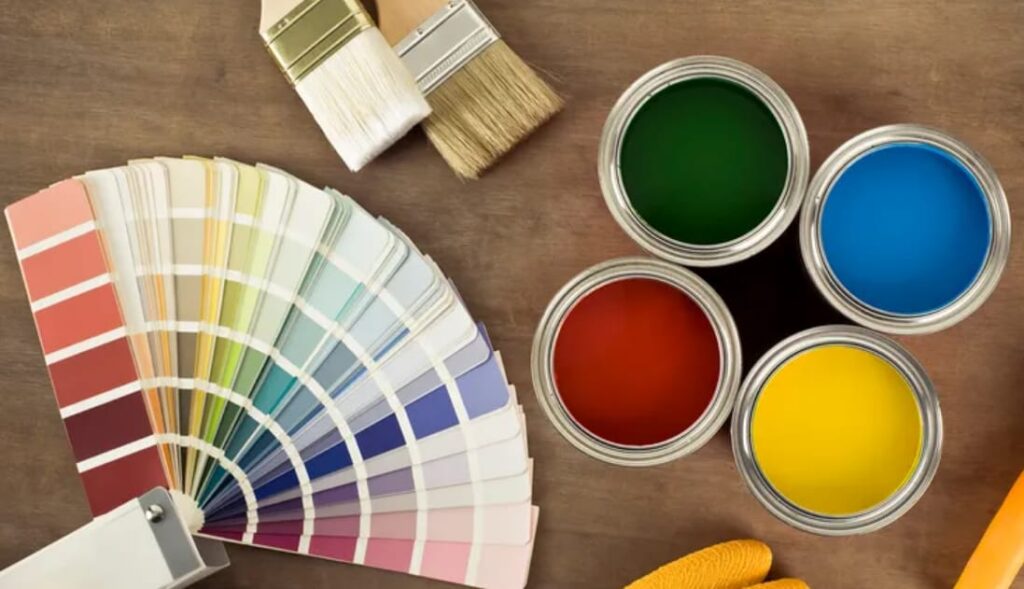Ever been stuck between paint swatches, unable to find the right shade to use for your next project? Mixing paint yourself at home is the artistic answer! Combining colors to achieve your own shade allows you to find a color specific to your styling. If you are repainting a room, a piece of furniture or a DIY craft project, tinting paint at home is surprisingly easy and inexpensive. This guide will help you with everything from what supplies to gather to tips on avoiding common blunders.
Thank you for reading this post, don't forget to subscribe!How to Tint Paint at Home: Equipment Required
Have everything ready before you start so it goes quickly and mess free.
Materials and Tools:
Base Paint: Typically a white neutral paint that creates the base for your specific color.
Color Tints: Liquid or concentrated pigments (available at general hardware stores or art supply stores)
Paint Stick or Mixing Stick: To mix your custom color and mix thoroughly.
Measuring Tools: Syringes or droppers for precise pigment measurements.
Mixing Containers: Disposable cups or buckets; this will depend on the amount of paint you’re tinting.
Paint Show (for your custom color) Swatch Paper/Paint Tester Board
IMPORTANT: You will need gloves to prevent your fingers from getting stained along with older clothes you don’t mind potentially getting stained.
Painters Tape: Perfect for labeling and organizing shades.
Soapy Water and Rags: For easy clean-up while you’re working.
Check out this quick rundown of helpful items that have them on hand will make your process easier, and ultimately, Father help make for a pleasant paint-tinting experience.
How to Tint Paint At Home: A Step-by-Step Guide
After you’ve rounded up your materials and selected your base paint and pigments, it’s time to get started creating your custom color!
Step 1 — Pick Your Base Paint, and the Tint
Choose a good quality base paint — usually white or a neutral color. Make sure your base paint is compatible with your tinting pigments — oil-based paints require oil-based tints, and water-based paints need water-based pigments.
Step 2: Set up your workspace
You will need to find a clean, well-lit space and lay down a drop cloth (or old newspapers) to prevent nasty spills on surfaces. Wear gloves and old clothes — pigments can be difficult to wash out.
Step 3: Add Tint to the Base Paint
Add your base paint (do note, you are working with a small amount at this point in a mixing container). Take your measuring tool and measure a drop or two of pigment inside of the paint. You definitely want to err on the side of starting small and building up the tint because a little bit of pigment can go a long way.
Step 4: Mix Thoroughly
Add the pigment to the base paint and then on with a paint stirrer or mixing stick blend the pigment into the base paint. Mix until the color is totally even and there aren’t any visible streaks of pigment.
Step 5: Test the Color
Dab a smeared amount of the blended paint on a paint tester panel, cardboard or swatch paper. Let it dry completely; wet paint usually looks darker than the final dried color.
Step 6: You Are The Tint You Need
If the paint is too light, add more pigment a drop at a time and mix in thoroughly. If it’s too dark for your taste, add more base paint to brighten it. Again test out the adjusted color to make sure it’s the hue you want.
Step 6: For Larger Quantities, Do This Repeat
Paint is most often sold in quarter-gallon, half-gallon, or gallon sizes. If you need a larger quantity for your project, measure from a small batch to your preferred amount to ensure that the color mixes well.
And voilà! You’ve now created your very own custom paint color.

Tips & Tricks for Tinted to Perfection
Here, a few tips from the experts to nail down your custom paint every time:
Take Detailed Notes
An excellent way to save yourself time is to write down the ratios of base paint to pigment. That way you know you will be able to match the exact color if you end up needing more paint later on in your project.
Stick to a Color Scheme
A color wheel is a great way to guess how various pigments will interact with each other. Complementary colors (directly opposite each other on the wheel) will neutralize a tone, while analogous colors (next to each other) make for congruous blends.
Employ Professional-Quality Pigments
Use top-notch tinting pigments to ensure you get vivid, even colors without streaks or inconsistencies.
Experiment with Layers
For a complex shade, paint pigments layer by layer rather than all at once. This gives you greater oversight of the final product.
Test In the Correct Light Always
The color can vary drastically depending on which light we observe it in. Sample your paint in the vicinity where it will be applied, in both natural and artificial light.
Mistakes You Should Avoid While Tinning Paint
But even the most experienced DIYers encounter snags. Some common mistakes — and how to avoid them:
Adding Too Much Pigment In One Use
If you overload your base paint with pigment, you may have no recourse to lighten the colour later. Always add pigment slowly and test along the way.
Mixing Too Little Paint
Fighting over the perfect hue can leave you high and dry (sorry) — nothing worse than running out of matching paint! Be sure to tint enough paint to cover your entire project, plus some to spare.
Skipping the Test Swatch
Wet paint never appears the same as its dried state on your walls. Always perform testing before applying to a larger area.
Forgetting to Stir Thoroughly
You may find streaks or uneven coloring caused by poorly mixed paint. That means always buff out your tint before applying it.
Not Accounting for Lighting
The context in which the colour is used may affect the way it looks. It is important to check your paint under the lighting conditions you will be working under.
Make Your Walls And Work Come Alive
There is no need to spend extra money at the hardware store on paint tinting colorants; tinting paint at home is a simple and economical way to add a personal touch to your projects. With a careful selection of base paint, taking the extra time to consider pigmentation and following the above steps, you will be on your way to making beautiful custom colors that suit your taste exactly.
If you’re stuck hunting down “the perfect shade,” why not make it yourself? And we could all use a little light now — so brighten your space today with a shade as unique as you are.
Happy painting!



